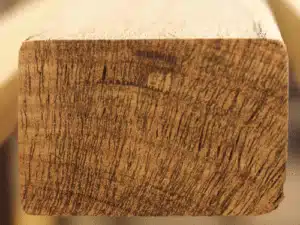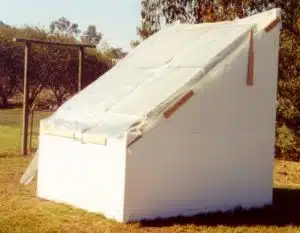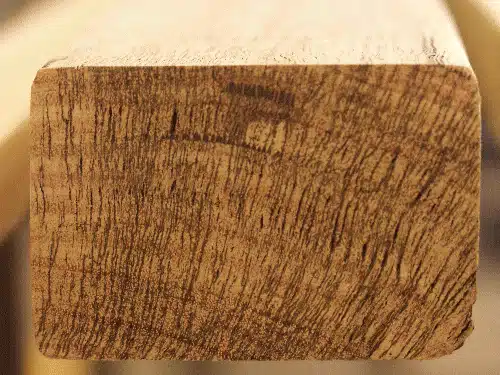A new process for drying wood could revolutionise the timber industry and lead to cheaper timber for customers.
The process combines a new microwave technology with more traditional drying techniques, such as solar drying.
At present it can take a year or more to convert some Australian timber into top quality furniture or flooring. Much of this time is needed to dry the wood after it has been sawn.
The microwave technology, developed by a team in the Australian Cooperative Research Centre for Wood Innovations, could reduce the time needed to dry wood to just months or less.
“A brief burst of high powered microwave energy before drying drastically shortens solar timber-drying time without changing the visual appearance of the wood”, said Mr. Graham Brodie, one of the CRC team.
Quicker drying means increased processing rate and reduced costs for the timber industry. These potential savings could be passed onto customers, making wood cheaper and more consistent in quality.
The work has been in progress for several years and members of the CRC team are currently running pilot microwave conditioning and drying trials on commercial timbers. “We hope that this technology will become a commercial reality soon,” says Graham.
Wood contains millions of tiny cells, stacked together in long rows. These cells resemble little water filled straws. When green wood dries this water slowly leaks out of these straws. Because the walls of these wood cells are quite solid, the drying process can be very slow. It can take several months or even a year to dry some timbers properly.
“Intense microwaves raise the temperature of the wet wood so fast that the water inside the wood cells boils. The steam pressure blasts tiny holes through some of the wood cells to create better connections between the straws. These pathways make it much easier for moisture to escape. Most of these tiny pathways can only be seen under a microscope”, says Graham.
Earlier experiments used a modified domestic microwave oven and a home made solar drier to treat small pieces of wood. The CRC microwave team has graduated to commercial scale microwave generators which are many times more powerful to treat much larger pieces of wood. A new microwave generator is under construction and has 300 times the power of a domestic microwave oven.
The microwave treatment also makes the wood more permeable, making wood processing such as preservative treatment more rapid.
“Microwave processing allows timber to be impregnated with resins or preservative to improve its strength, stability and durability,” says Professor Peter Vinden, CEO of CRC Wood Innovations. “Microwave technology enables acceleration of preservative treatment to a few minutes, and generates a more environmentally friendly product.”
Graham is presenting his work to the public and the media for the first time thanks to Fresh Science, a national program presented at the State Library of Victoria.
 |
 |
|
| Microwaved wood showing holes blown through | Solar kiln – used to dry timber | |





 Fresh Science is on hold for 2022. We will be back in 2023.
Fresh Science is on hold for 2022. We will be back in 2023.